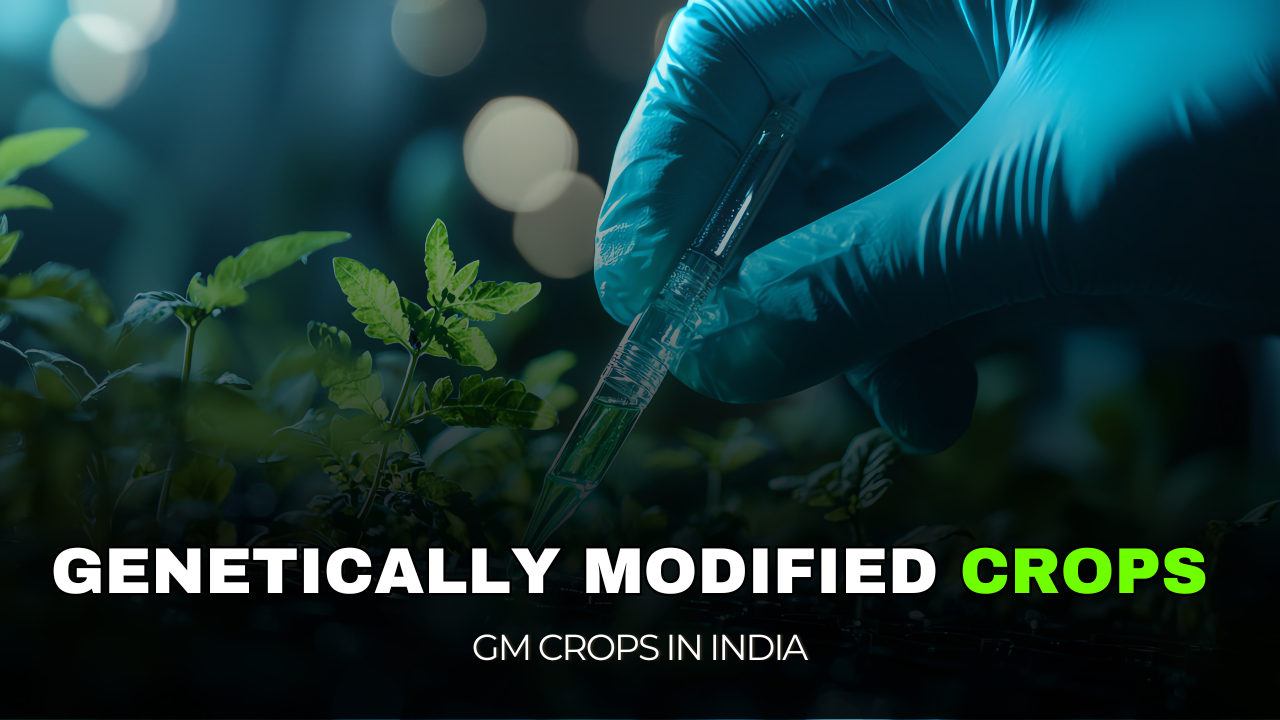Font size:
Print
Genetically Modified GM Crops in India
The Supreme Court will begin hearing petitions against the commercial approval of GM mustard from April 15, 2025.
More on News
- The Environment Ministry’s 2022 approval for GM mustard was challenged, delaying its cultivation.
- A split verdict from a two-judge Bench in July 2024 called for a national policy on GM crops, which is now under formulation.
GM Crops
- Genetically Modified (GM) crops, also known as genetically engineered (GE) crops or bioengineered crops, are plants whose DNA has been altered using genetic engineering techniques.
- In the 1990s, scientists discovered how to genetically modify plants to resist pests and diseases.
- Early examples of this innovation were Bt cotton in India and Bt brinjal in Bangladesh, where a gene from the bacterium Bacillus thuringiensis was inserted into the crops.
- This gene enables the plants to produce a toxin that kills specific insect pests, reducing the need for chemical insecticides.
- Similarly, herbicide-tolerant (HT) GM crops are engineered to withstand certain herbicides, helping farmers kill weeds without harming crops, thus reducing the need for mechanical weed removal.
- Early examples of this innovation were Bt cotton in India and Bt brinjal in Bangladesh, where a gene from the bacterium Bacillus thuringiensis was inserted into the crops.
- This development has led to more efficient farming practices, reducing labour and costs.
Current Status of GM Crop Cultivation in India
- Bt cotton remains the only GM crop approved for commercial cultivation.
- GM mustard, despite receiving clearance from the Genetic Engineering Appraisal Committee (GEAC), faces resistance from activist groups over safety concerns.
- The Union Environment Ministry is working on a national GM crop policy with technical inputs from the DBT.
India’s Growing Bio-Economy and GM Agriculture
- A DBT report highlighted that bio-agriculture makes up 8.1% of India’s $165.7 billion bio-economy, valued at $13.5 billion.
- GM crops like Bt cotton and precision agriculture technologies are enhancing agricultural productivity and resilience.
- The bio-economy is dominated by bio-industrial (47%) and biopharma (35%) sectors, with Maharashtra, Karnataka, and Telangana leading the way.
Benefits of GM Crops:
- Increased Yield: GM crops can be engineered to have higher yields, which means more food can be produced from the same amount of land.
- Insecticide Reduction: GM crops with Bt toxin reduce the need for insecticides. For example, in India, this has decreased farmers’ exposure to harmful chemicals.
- Climate Resilience: Some GM varieties are developed to withstand extreme weather conditions such as drought and salinity, making them suitable for regions affected by climate change.
- Nutritional Enhancement: Biofortified GM crops can address malnutrition by providing essential nutrients that are lacking in traditional diets.
The Future of Biotech Startups in India
- India had 10,075 biotech startups in 2024, expected to grow to 22,500 by 2030, generating 35 million jobs.
- Government policies, including the BioE3 policy, focus on biotechnology advancements in enzymes, pharmaceuticals, and agriculture.
Subscribe to our Youtube Channel for more Valuable Content – TheStudyias
Download the App to Subscribe to our Courses – Thestudyias
The Source’s Authority and Ownership of the Article is Claimed By THE STUDY IAS BY MANIKANT SINGH





